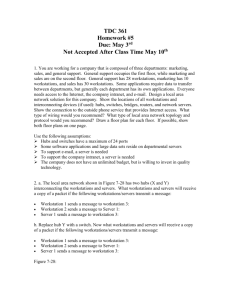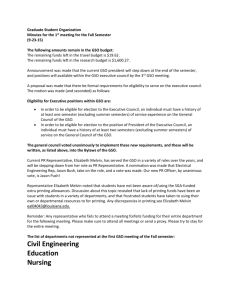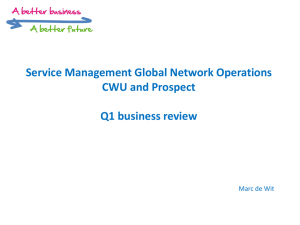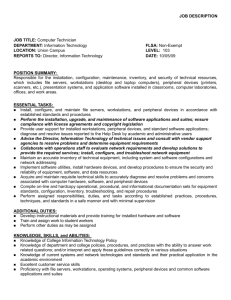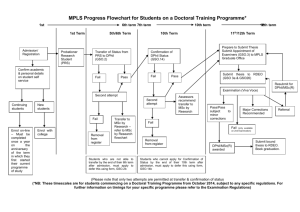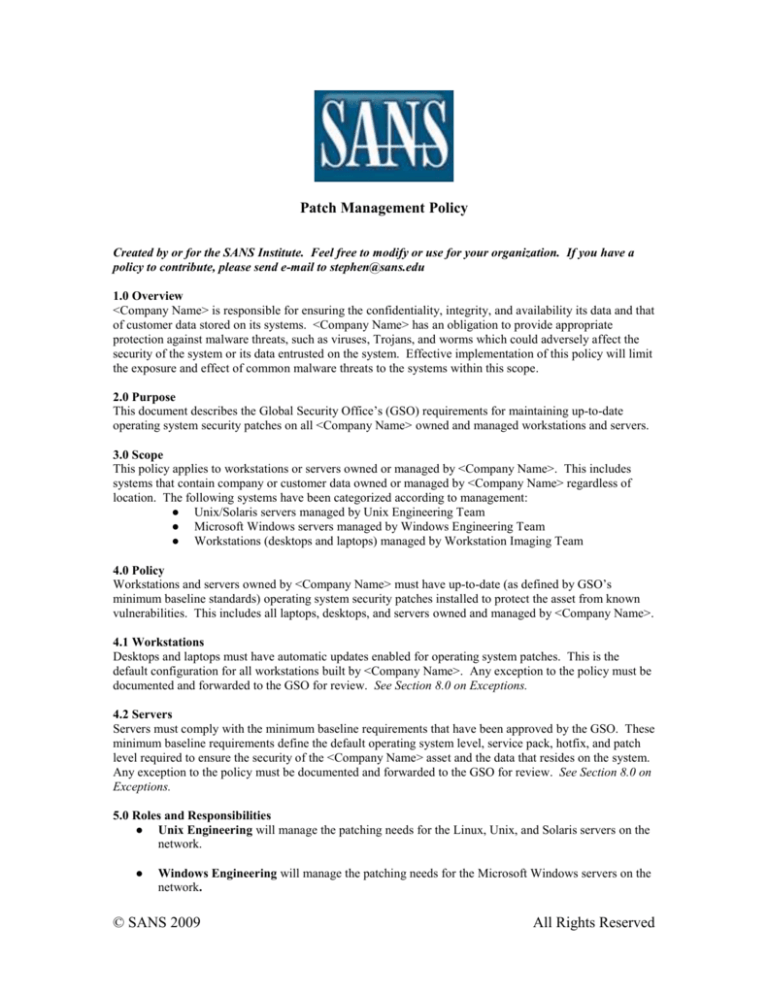
Patch Management Policy
Created by or for the SANS Institute. Feel free to modify or use for your organization. If you have a
policy to contribute, please send e-mail to stephen@sans.edu
1.0 Overview
<Company Name> is responsible for ensuring the confidentiality, integrity, and availability its data and that
of customer data stored on its systems. <Company Name> has an obligation to provide appropriate
protection against malware threats, such as viruses, Trojans, and worms which could adversely affect the
security of the system or its data entrusted on the system. Effective implementation of this policy will limit
the exposure and effect of common malware threats to the systems within this scope.
2.0 Purpose
This document describes the Global Security Office’s (GSO) requirements for maintaining up-to-date
operating system security patches on all <Company Name> owned and managed workstations and servers.
3.0 Scope
This policy applies to workstations or servers owned or managed by <Company Name>. This includes
systems that contain company or customer data owned or managed by <Company Name> regardless of
location. The following systems have been categorized according to management:
● Unix/Solaris servers managed by Unix Engineering Team
● Microsoft Windows servers managed by Windows Engineering Team
● Workstations (desktops and laptops) managed by Workstation Imaging Team
4.0 Policy
Workstations and servers owned by <Company Name> must have up-to-date (as defined by GSO’s
minimum baseline standards) operating system security patches installed to protect the asset from known
vulnerabilities. This includes all laptops, desktops, and servers owned and managed by <Company Name>.
4.1 Workstations
Desktops and laptops must have automatic updates enabled for operating system patches. This is the
default configuration for all workstations built by <Company Name>. Any exception to the policy must be
documented and forwarded to the GSO for review. See Section 8.0 on Exceptions.
4.2 Servers
Servers must comply with the minimum baseline requirements that have been approved by the GSO. These
minimum baseline requirements define the default operating system level, service pack, hotfix, and patch
level required to ensure the security of the <Company Name> asset and the data that resides on the system.
Any exception to the policy must be documented and forwarded to the GSO for review. See Section 8.0 on
Exceptions.
5.0 Roles and Responsibilities
● Unix Engineering will manage the patching needs for the Linux, Unix, and Solaris servers on the
network.
●
Windows Engineering will manage the patching needs for the Microsoft Windows servers on the
network.
© SANS 2009
All Rights Reserved
●
Workstation Imaging will manage the patching needs of all workstations on the network.
●
Information Security is responsible for routinely assessing compliance with the patching policy
and will provide guidance to all groups in issues of security and patch management.
●
The Change Management Board is responsible for approving the monthly and emergency patch
management deployment requests.
6.0 Monitoring and Reporting
Active patching teams noted in the Roles and Responsibility section (5.0) are required to compile and
maintain reporting metrics that summarize the outcome of each patching cycle. These reports shall be used
to evaluate the current patching levels of all systems and to assess the current level of risk. These reports
shall be made available to Information Security and Internal Audit upon request.
7.0 Enforcement
Implementation and enforcement of this policy is ultimately the responsibility of all employees at
<Company Name>. Information Security and Internal Audit may conduct random assessments to ensure
compliance with policy without notice. Any system found in violation of this policy shall require
immediate corrective action. Violations shall be noted in the <Company Name> issue tracking system and
support teams shall be dispatched to remediate the issue. Repeated failures to follow policy may lead to
disciplinary action.
8.0 Exceptions
Exceptions to the patch management policy require formal documented approval from the GSO. Any
servers or workstations that do not comply with policy must have an approved exception on file with the
GSO. Please refer to the GSO or local Information Security representative for details on filing exceptions.
7.0 Definitions
Term
Patch
Trojan
Virus
Worm
Definition
A piece of software designed to fix problems with or update a computer
program or its supporting data
A class of computer threats (malware) that appears to perform a desirable
function but in fact performs undisclosed malicious functions
A computer program that can copy itself and infect a computer without
the permission or knowledge of the owner.
A self-replicating computer program that uses a network to send copies of
itself to other nodes. May cause harm by consuming bandwidth.
6.0 Revision History
1.0 initial policy version, 4/28/2009
Key fingerprint = AF19 FA27 2F94 998D FDB5 DE3D F8B5 06E4 A169 4E46
© SANS Institute 2006 All Rights Reserved
© SANS 2009
All Rights Reserved

